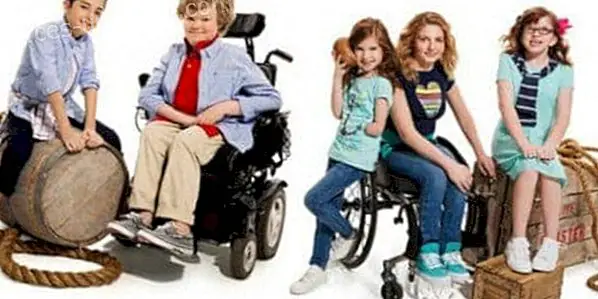
Through the e-magazine, Pedagogy 3000, # 70 we learn about the role that Reggio Emilia schools do in the world. Founded in Italy several decades ago, these schools put the focus on the creativity of each child, recognizing that each one is different and deviate from the trite and generalist paths in teaching in favor of teaching respect, the correct use of freedom, the concrete and personal values of each child, among many other fantastic work they do. Through this newsletter you will learn many more things about this beautiful work.
Reggio Emilia schools, creativity and joy
This newsletter presents the education “Reggio Emilia”, founded in Italy in 1945 by Loris Malaguzzi, that such good results with today's children, especially in children (pre-school). Most of the text is taken from: http://blog.pucp.edu.pe/item/30541
And the photos were kindly sent from the Reggio Emilia nursery, Dawn, child development space of Arequipa, Peru (1). Many thanks to the team of this center, very interesting. I visited it in February of this year and I liked it. First the decoration is not overwhelming. White walls, and only works of art, works of the boys and little decoration but of good taste that helps to elevate the soul by its aesthetics and its messages. Second is one of the few places that I have seen where the child can eat as he wants (that is, he can serve what he likes on his plate and go to eat wherever he likes ... That I liked considering the “trauma” of meals sometimes with some adults and some children now). Then I liked all the variety of recycled material used by children and especially the freedom, creativity and respect used in all activities with children. Noemi
The principles of Reggio Emilia
What are the reggian principles? In short, Reggio Emilia Schools work on the following principles:
1. Importance of human relationships: The point is that the social sense (in terms of community and cooperation).
2. The theory of "One hundred children's languages": Adults immediately recognize verbal language as the main means of communication. Perhaps, some others may think of gestural language as another usual means. But ... in how many ways can a child express himself?
3. The practice of listening: the adult "comes down from his tower" not as "the king who wants to listen to the people" but as who wants to learn from others.
4. The valuation of diversity and complexity: Here the phrase "each person is a world" goes into practice because it is understood that the homogenizing conception of teaching does not fit in reality because it is heterogeneous. Then, closeness to a real world must accept the diversity and complexity of the interaction of differences.
5. The participation of families and society: Educational work is not simply the work of formal educators nor does it end class schedules. Parents and other members of society must participate and assume a role that corresponds to them by right and duty.
6. The collaborative and community school: Highlights the community vision of the Reggio Emilia schools.
7. The formation of educators: Educators are conscious beings of their role in the human development of children. That is why we talk about formation n and not simply about capacitation
8. Workshops and the atelierista: Art is a very important aspect in the Reggio Emilia Schools although it is not just an art education. Therefore, the workshop and the atelierista are vital elements to ensure attention to art, visual research and aesthetics.
9. Child development documentation: The common thing in evaluation systems is the registration of a number or letter that designates the approved and disapproved without being aware of the child's history. o. And it is that a child with verbal skills but not mathematical probably does not have the same results in quantitative terms; however, the progress that has developed from its starting point can be much more important and significant than that of others. That is, it is likely that this child learned and developed more than others for whom the subject was always simple. Here is an example in traditional subjects, but the record of that progress qualitatively is applicable to any cognitive, emotional, or emotional aspect. The purpose is the child's understanding and not the truncated translation of the qualitative in a note.
10. The rediscovery of creativity: Creativity is conceived as an immanent feature of any person; since it is not a purely artistic or inspiracional issue, but a developable and generic application faculty. Be a non-artistic example, when solving a problem or an exercise in mathematics, the typical thing is to refer to a solution path that in the end everyone will have in Your notebooks However, even for the exact sciences, there is more than one possible solution. The person who came up with that different way of solving the problem, we call it `` inventive, '' but in reality what he has done is to manifest his creativity.
11. The quality of space and the environment: The most common thing is that when talking about the classroom environment it is believed that it is about decorating the place so that the student feels comfortable and willing to learn. In this case, it is about something else: furnishing, distributing, using elements that facilitate learning not only because it feels good, but because it finds the objects found to be useful. in his living room. Some other currents use a similar concept when devising the reading, math, game, etc.
What do these schools entail?
They are considered schools of a unique living organism, a place of coexistence and relational exchange between adults and children. A place where you think, discuss and work trying to reconcile what is known with what is not known, difficulties, mistakes, expectations, successes, doubts and problems of choice. A different way of working that had not been seen so far and that many schools still follow today.
Objectives you intend
The aim of these schools is to create a friendly school, that is, active, inventive, habitable, documented and communicable, a place of research, learning, recognition and reflection, in which educators, children and families are well. It is intended to structure a relational and participatory pedagogy of all its members, in practice, the pedagogy of the relationship is constantly changing, it has to reinvent, communicate and be able to conduct multiple meetings. For example: previous meetings with families to define and analyze the purpose of work projects and their organization.
Some of the ideals that are pursued are
• Flee from a culture and education that value cognitive and homeostatic self-regulation, which despise feelings, non-logic and the role of affectivity.
• Regarding the pedagogy of the relationship and learning they consider to be coincidental, they start from the idea that children do not learn from a cause-effect relationship, nor from direct adult-child teaching, but that their learning is worthwhile of them, of their activities and of the use of the resources they possess.
• On the other hand, bidirectionality is an unavoidable principle, in which the abilities of the adult and the child need each other for good teaching that allows the learning abilities that the child possesses to emerge. It is important to sow a field that makes emerge the structural links between the cognitive, the relational and the emotional.
Trust and security
These schools have neither programming nor curriculum, but they look for them, transforming them into something else, living with the children, working with certainty, uncertainty and with the new. Ignorance is what drives them to investigate, based on the ideas, suggestions, questions and problems that arise from children. For this to be possible, an environment of trust and security must be created between the adult and the child.
The projects are usually based on experiences that have already taken place, based on the interests that children wish to deepen, these interests must be known to educators in order to be able to tune them to the objectives they intend. It is an essential requirement to seek an initial motivation on the part of children
As Loris Malaguzzi says
"The things of children and for children are learned only from children."
Early Childhood Education in Reggio Emilia, page 31-28.
Testimonials
Hello, I went to Reggio Emilia more than 5 years ago to an international congress and although I work in high school I apply a lot of what I have learned. Thanks and Chao. Mexican teacher
My 3 year old son attends a Reggio Emilia preschool in Peru and I feel very satisfied with the method. Respect their age and do not pressure children at all.
Thank you. Peruvian mother
Hello, it is an immense joy to read so many comments about Reggio Emilia. I am a Párvulos Educator in Chile and this is our first year in our Garden in which we work the methodology of the Regio. We are amazed, committed and happy to see in so little time what it means for educators as well as for children and their families to be able to break so many schemes that only lead to a rigid preschool education. Chilean educator.
Hello, I am a child educator, I live in Coruña-Spain and I have been working with groups of 2-3 years for two years and the truth is that this methodology has satisfied me the anguish that I often felt, for not living the educational practice as I did It looked like it had to be. Thank you for showing me that another way of educating and learning is possible. Greetings and thanks again. Educator of Spain.
Taken from the web
Historical: How did the Reggio Emilia schools begin?
We publish here the whole history of Reggio Emilia. It is impressive how schools come out of nowhere ... They are beautiful examples! ... It seems that history repeats itself ...
The town of Reggio Emilia, Italy
It all starts in the spring of 1945, at the end of World War II, the people of a town, located a few kilometers from Reggio Emilia decide to build and manage a school for children. It was a school out of nowhere, which began with great desire and enthusiasm but it was not known how to continue forward. The only thing that made them follow were the desire and enthusiasm of some peasants (especially widowed women because of the war) who wanted things to change. In the beginning it was self-managed by the people until they achieved municipal management. To this were added more schools around the periphery, promoted by women and with the collaboration of the CLN (National Liberation Committee).
The education of the children was in the hands of exceptional and highly motivated educators, although their training came from private and Catholic teaching schools, their thinking was very open, ambitious and full of energy. The beginnings were very hard, some of the children were tired, malnourished and in ephemeral health, for them the Italian language was practically unknown since different dialects were spoken in their homes. All this was overcome with the enormous enthusiasm and desire of educators and with the collaboration of mothers and fathers whose main objective were their children.
In 1954 society embarks on a new path that will entail a change in the conception of children's schools. Earlier this year, more specifically on January 3, 1954, television broadcasts begin in Italy, people begin to emigrate from the countryside to the city and women begin their long struggle to claim equality and their rights, which for so many years had been denied, thus beginning to break with tradition. This is a huge change in the way children see schools, here begins the real demand from women who start working outside the home. This makes the city council decide and bet on the creation of new nursery schools.
In 1963 the first municipal nursery school was born for children from 3 to 6 years old. Initially installed in a prefabricated wooden building and imposed by the authorities. It consisted of 2 classrooms for about 60 children, it was called Robinsón. Three years later the building was burned because of a short circuit but one year later and after overcoming all the setbacks and walls imposed by the government at that time, the city council managed to build the first municipal children's school for children from 3 to 6 years old. already work.
In 1968 the classrooms in nursery schools became 12, 24 in 1970, 43 in 1972, 54 in 1974 and 58 in 1980.
This was a gap in the network of Catholic schools, which at that time were owners of the educational monopoly. This situation did not please the Catholic side, reaching to spread a very violent smear campaign on the radio against the schools of Reggio Emilia and the municipalities. Not only did they bother losing this monopoly of education but their income was beginning to be very low and there was a law that did not allow more privileges to private schools and they needed help. But everything does not end here, the government was also unhappy with this situation because of the enormous cultural growth that the population was suffering and the enormous interest that this experience raised internationally.
The first nursery school from 0 to 3 years old was held in 1971 thanks to the 10 years of women's struggle for their equality, their needs and those of their children. These schools needed a greater specialization and professionalism on the part of the educators and educators, only surpassed thanks to their youth, motivation and desire to learn in addition to the sensitivity of the parents who started in this adventure.
The schools of Reggio Emilia had the opportunity to work and count on the collaboration of Loris Malaguzzi from the beginning, in addition to the union over time of people like Gianni Rodari, great creator of grammar and children's stories, and with the help of Bruno Ciari, one of the best and most passionate children's educators of the moment. They also had a huge range of references and inspirations both theoretical and authors, authors of the 50s as: Rousseau, Pestalozzi, Froebel, Bovet, Ferrière and Dewey, later: Decroly, Gramsci, Freinet, Wallon, Cleparéde, Marenko, Erikson, Piaget, Wertheimer, Lev Vygotsky, Bruner, Freire, Fromm, Bronfenbbrener, Maslow, Rogers and Hawkins. Already later in the 80s: Carr, Gardner, Kagan, Shaffer, Kaye, Bateson, Morrin, Prigogine, von Foerster, Varela and Edelman. Popper, Bachelard, Lorenz, Bronowsky, Wittgenstein, Meisemberg, Arnheim and Grombrich. Apart from all these authors and their theories, they had to study and meet other authors, theories and conceptions in order to make an explicit rejection of them.
Loris Malaguzzi, a great teacher and teacher
He dedicated his life to building an experience of educational quality.
Bibliography
“The ethics in thought and pedagogical work of Loris Malaguzzi”, Alfredo Hoyuelos.
"Early childhood education in Reggio Emilia", Loris Malaguzzi.
More information in:
http://www.sarel.es/index.php?id=90 (Reggio Emilia and the pedagogy of Loris Malaguzzi)
http://www.redsolare.com/new3/hoyuelos.pdf (Reggio Emilia and the pedagogy of Loris Malaguzzi)
http://redsolareperu.com/grupo.html (study group for Reggio Emilia)
(A revolutionary turn in preschool)
(1) Contact and thanks for the photos:
Sunrise, child development space, Arequipa, Peru
Tel.: 275039
See the brochure in
We urge you to distribute this material, without commercial purposes, electronically or in print, as long as the service's credits, the authors, as well as the source and the link are mentioned.
2009 Pedagooog a 3000





